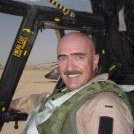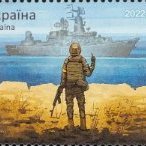-
Content Count
1,486 -
Joined
-
Last visited
About CF104
-
Rank
Starfighter Nut

- Birthday 03/31/1966
Contact Methods
-
Website URL
http://
-
ICQ
0
Profile Information
-
Gender
Male
-
Location
Calgary, Alberta, Canada
-
Interests
R/C flying, music and recording. P/C sims. Licensed Aircraft Mechanic currently working on the B757-200, B767-300ER, Airbus A300, MD-10/MD-11 and have 10+ years Herk experience. Also worked on the B727, B737, CT-114, CT-133 and CF-104 to name just a few.
-
My bad, sorry for intruding on your post. Regards, John
-
Yes, it's ex RCAF with a 6-3 hard wing. Here's more information. https://www.aerialvisuals.ca/AirframeDossier.php?Serial=17006
-
As nice as the kit is, I feel it's over engineered in some places. I'm a firm believer of test fitting before gluing and found the gun port panel will not fit with the backing piece if installed per the instructions. Therefore I omitted the backing piece and only installed the gun port panel. The backing piece looks like it's meant for the later open gun port panel. Weird placement of the gun port panel and its associated panel lines as well. Lots of close seam line filling and rescribing to get the gun port area to look correct. Cheers, John
-
CF104 started following Always check your refs!!!, NASA/Gulfstream F-15 Quiet Spike, F-14A HUD questions? and 1 other
-
It's designed to create several lower intensity shock waves which reduce the overall noise of the sonic boom created by the aircraft. https://en.wikipedia.org/wiki/Quiet_Spike Cheers, John
-
These are flight sim (DCS) screen grabs of the Heatblur F-14A. In the sim you can remove the gun camera by clicking on it to allow increased viewing area for the approach. IRL, it's pretty much a standard bolt on item and would be there in 1982. Cheers, John
-
They are the same. When on the left the static dischargers are on top and when it's flipped to the right side they are on the bottom. They are built that way on purpose so you will never see them the other way around. Cheers, John
-
And a collection of photos of the 50th Anniversary scheme with a good shot of the WAC HUD. 88-0456 50th-anniversary Cheers, John
-
That's definitely a WAC HUD. Here's a photo from 2009 showing it with the WAR HUD. Cheers, John
-
Without a photo or confirmation from a pilot or maintainer it would just be guessing. 🤔 Cheers, John
-
Sorry for interrupting your post with conversation on a topic I do have some experience on. I'm out. Carry on!
-
Just being a bit pedantic as I used to work on the CT-133. The Silver Star (We called them T-Birds) Mk1's came in 2 batches. The first 21 were a mix of FY 50 and 51 T-33A's which also had a mixture of fixed seats and ejection seats as seen in photo evidence. The second batch of 10 were all FY 51 T-33A aircraft which had the ejection seats. All of these aircraft, save one, were returned to the US once sufficient levels of the Mk3 were being delivered. The single Lockheed T-33A Mk1 that remained, USAF No. 51-4198, was modified by Lockheed in cooperation with Canadair into the sole R
-
The above photo is of a Canadair CT-133 Mk.3 21620 (circa. 1967) with the ejection seats removed for maintenance. You can see the seat catapults installed between the seat rails. All Canadair built CT-133's were delivered with ejection seats. This is a much earlier photo of the same aircraft with the ejection seats installed. We received 2 batches of loaner T-33A's for a total of 31. The first batch of 21 Lockheed T-33A's were CDN Serial Nos. 14675-14695 (various USAF Ser. Nos) and were known as the Silver Star Mk. 1. 14695 (USAF No. 51-4198) became the RR NENE
-
The screen itself wasn't fine enough to block airflow to the point of having an effect on performance. Early turbine engines were very susceptible to FOD damage and this was just a simple way of mitigating this. Even centrifugal engines like the Allison J33 and the Rolls Royce Nene had inlet screens for the same purpose. Cheers, John
-
The J47 in the video is most likely a J47-GE-27 as used in the F-86F. The FOD screen on the -27 was retractable in flight via a switch in the cockpit. The F-86A had the J47-GE-7 which had a fixed FOD screen installed which could not be retracted. There are 2 versions. Both of which can be seen in that photo. The engine on the right has the original external fixed screen and the one on the left has the internal fixed screen which resembles the -27 engine screen. The F-86A didn't have a switch in the cockpit to retract the screen so flight in any sort of icing producing conditions w
-
Hey Jeffrey, You do know that if you make it I'll have to buy it. Cheers, John






